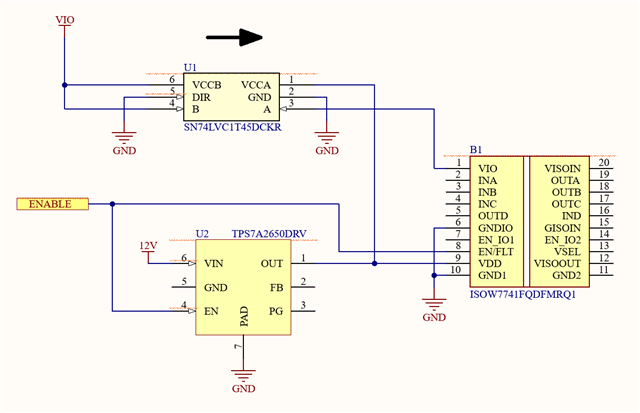Other Parts Discussed in Thread: TPS22996
Great part! I have a 5V to 5V isolation barrier working with the EN_IO pin floating (enabled). EN/FLT is pulled up to VIO with 100K. With Vdd power at 5V the current into VIO is 4mA. With Vdd removed the current into VIO remains close to 4mA. The SPI bus in not connected to anything yet so no consumption there.
What is the best way to reduce current consumption on VIO? Connect both EN/FLT and EN_IO and bring to ground?



